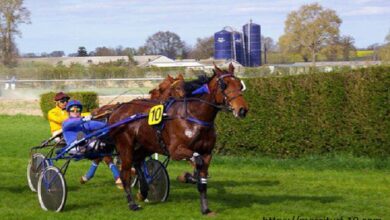Boss Turf Sur: A Deep Dive into Gang Culture

Introduction
Boss Turf Sur, often abbreviated as BTS, is a notorious gang with a significant presence in various urban areas. This gang has gained a reputation for its strict hierarchy, territorial control, and involvement in various criminal activities. Understanding Boss Turf Sur requires delving into its history, structure, and the socio-economic conditions that facilitate its growth.
History of Boss Turf Sur
The history of Boss Turf Sur dates back to the late 20th century. Emerging in response to socio-economic disparities, the gang provided a sense of belonging and protection to its members. Over the years, Boss Turf Sur has evolved from a small street gang to a well-organized criminal enterprise. The gang’s history is marked by violent turf wars, alliances with other gangs, and clashes with law enforcement.
Organizational Structure of Boss Turf Sur
Boss Turf Sur operates with a highly organized structure. At the top of the hierarchy is the gang leader, followed by lieutenants who oversee various territories or “turfs”. Each turf is managed by lower-ranking members who enforce the gang’s rules and manage daily operations. This strict hierarchy ensures control and loyalty within Boss Turf Sur, making it a formidable organization.
Recruitment and Initiation Rituals
Recruitment into Boss Turf Sur often starts at a young age. The gang targets vulnerable youth, offering them protection and a sense of belonging. Initiation rituals are a crucial part of joining Boss Turf Sur, often involving acts of violence to prove loyalty and commitment. These rituals serve to bond new recruits to the gang and instill a sense of fear and respect.
Activities and Operations
Boss Turf Sur is involved in various illegal activities, including drug trafficking, extortion, and robbery. The gang’s operations are highly organized, with specific members assigned to different roles such as drug distribution, financial management, and enforcement. Boss Turf Sur’s activities are not limited to criminal enterprises; they also exert influence over local communities through intimidation and control.
Impact on Communities
The presence of Boss Turf Sur has a profound impact on local communities. While some view the gang as a source of protection, others see it as a menace that perpetuates violence and crime. The gang’s control over certain areas can stifle economic development and create an atmosphere of fear. Efforts to combat Boss Turf Sur’s influence often involve community outreach and collaboration with law enforcement.
Law Enforcement and Boss Turf Sur
Law enforcement agencies face significant challenges in dealing with Boss Turf Sur. The gang’s organized structure and deep-rooted presence in communities make it difficult to dismantle. Strategies to combat Boss Turf Sur include surveillance, undercover operations, and community policing. However, the gang’s ability to adapt and evolve means that law enforcement must continually develop new tactics.
Media Representation
Media portrayal of Boss Turf Sur plays a crucial role in shaping public perception. Often depicted as violent and ruthless, the gang’s representation in movies, news reports, and documentaries can influence societal attitudes. While some media representations highlight the harsh realities of gang life, others may inadvertently glamorize the gang’s lifestyle, attracting impressionable youth.
Societal Implications
The existence and activities of Boss Turf Sur have broader societal implications. Issues such as poverty, lack of education, and limited economic opportunities are often underlying factors that drive individuals to join gangs. Addressing these root causes is essential in reducing the appeal of gangs like Boss Turf Sur. Community programs, educational initiatives, and economic development are key strategies in this regard.
Future of Boss Turf Sur
Predicting the future of Boss Turf Sur involves considering various factors, including law enforcement efforts, community resilience, and socio-economic conditions. While the gang’s adaptability suggests it may continue to exist, sustained efforts to address the underlying issues that fuel gang membership could reduce its influence. Collaboration between communities, law enforcement, and policy makers is crucial in shaping the future landscape.
Conclusion
Boss Turf Sur is a complex and multifaceted organization that has left a significant mark on the communities it inhabits. Understanding its history, structure, and impact is essential for developing effective strategies to combat its influence. While the challenges are considerable, addressing the socio-economic conditions that contribute to gang culture is a critical step in reducing the appeal and power of gangs like Boss Turf Sur.
FAQs
Q1: What is the origin of Boss Turf Sur?
A1: Boss Turf Sur originated in the late 20th century, emerging as a response to socio-economic disparities and providing a sense of belonging and protection to its members.
Q2: How does Boss Turf Sur recruit new members?
A2: Recruitment often targets vulnerable youth, offering them protection and belonging. Initiation rituals, usually involving acts of violence, are required to prove loyalty and commitment.
Q3: What are the main activities of Boss Turf Sur?
A3: Boss Turf Sur is involved in various illegal activities, including drug trafficking, extortion, and robbery, alongside exerting influence over local communities.
Q4: How do law enforcement agencies combat Boss Turf Sur?
A4: Law enforcement uses strategies like surveillance, undercover operations, and community policing to combat Boss Turf Sur, but the gang’s adaptability presents ongoing challenges.
Q5: What societal factors contribute to the existence of Boss Turf Sur?
A5: Factors such as poverty, lack of education, and limited economic opportunities contribute to the existence of Boss Turf Sur, highlighting the need for comprehensive community and economic development programs.





